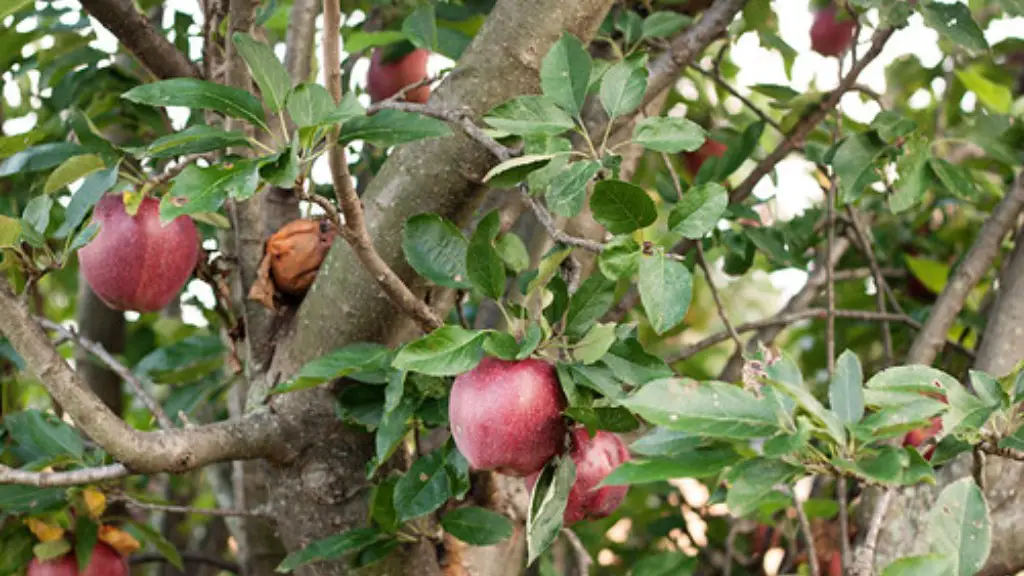Whether you’re hoping to cultivate a source of homegrown citrus indoors or an interesting aesthetic piece in your living room, it’s possible to grow a lemon tree in a pot. Lemon trees (Citrus limon) are suitable for container gardening as they require only limited space to thrive. Though there’s work involved, it is doable to nurture a lemon tree in your home, even if you don’t live in an area with sunny, Mediterranean-esque weather.
Before you purchase your lemon tree, keep in mind that citrus trees usually don’t flower or produce fruit indoors. To get a tree to blossom, it needs to be exposed to at least 8 hours of sun per day. Therefore, when it comes to growing lemon trees in a pot, the process abides by the same rule – so you’ll need to put your tree outside during the summer months.
In order for a lemon tree to reach an optimal level of growth, it must be placed in a pot that’s the right size. When it comes to container gardening, the pot should never be bigger than the tree’s roots, so make sure the pot you choose is slightly smaller than your tree’s root ball. That said, you’ll need to repot your tree every few years in order to encourage its growth; use fresh soil each time.
Seeing as indoor lemon trees can’t handle extreme temperatures, you’ll want to keep your tree away from cold drafts and any hot areas like radiators and air conditioners. Additionally, if the pot your tree is in is sitting in a spot that’s wet, it will likely lead to root rot. The easy solution for this is investing in a pot that has adequate drainage. Add perlite or sand to the top layer of the soil to help with proper drainage.
Now for the fun part; tending to your tree. In spite of the fact that your tree will mostly exist indoors (it should thrive with temperatures between 45 and 85 degrees Fahrenheit), you’ll need to water it every other day. Giving your tree a good soak without over-doing it can be tricky. That’s why you should insert your finger 4 to 5 inches deep into the tree’s soil to ensure that it isn’t too moist. If it is, then you should reduce the amount of water the tree is getting.
Along with watering your tree, feeding it is another major component of pot gardening. Fertilize your lemon tree at least once a month throughout the growing season (from April to October) with a fertilizer that’s low in nitrogen. Avoid applying too much fertilizer as doing so can stunt a tree’s growth. Lastly, you’ll need to prune your lemon tree to maintain its size and shape. That said, try to do so during its dormant season, which extends from late November to late March.
Continuing on Pot Placement
When your citrus plant is outdoors, the sun’s rays help to warm the soil. However, when it’s indoors, this process ceases to exist; hence, you’ll need to take measures to ensure your tree is at a comfortable temperature. A great way to do this is by investing in a larger pot, especially one that’s made of terracotta, clay or ceramic. These materials absorb more heat than plastic, meaning your tree’s roots can remain toasty even during the winter months.
Pot placement is essential when it comes to a tree’s survival. If you live in a cold climate, ensure your pot isn’t situated outside as frost is dangerous to any citrus plant. At the same time, try to avoid placing your pot in direct sunlight as it can make your tree grow too quickly and cause certain fruits to dissipate. On the other hand, if your plant’s not receiving enough sunlight, the lemon on the tree might stay green.
When your lemon tree is outdoors, try to keep it away from any windy areas. That said, if the wind is unbearable, you might need to put some kind of barrier around your tree to protect it from the gusts. Additionally, to get your tree to produce as many lemons as possible, consider placing it on a piece of plywood or a plant stand so it can absorb any heat that’s coming up from the ground.
When it comes to humidity, the optimal air humidity for a lemon tree is between 50 and 55 percent. If you’re dealing with dry air, you can slightly increase the humidity around your tree by regularly misting its leaves and placing a shallow tray filled with water underneath the pot. This process allows your tree to absorb the moisture from the tray, thus removing the burden from having to water it too often.
In addition to the above, it’s important to routinely clean your plant’s leaves. As long as you don’t use any kind of pesticides, you can easily wipe your lemon tree’s leaves with a damp, soft cloth. This simple process allows your tree to stay free of any dirt and increases photosynthesis, meaning your tree will grow stronger and faster.
Citrus Planting Basics
Once you’ve addressed the type of pot and where to place your lemon tree, it’s time to get out the soil and get planting. To make sure your soil is suitable for growing citrus plants, use a soil mix that’s characterized by its good drainage properties.
It’s also important to know the acidity of your soil; the ideal soil for citrus plants have a pH level of between 6.5 and 7.5. Any level lower than 6.5 suggests the soil is too acidic, whereas any number higher signals that it may be too alkaline for the plant.
If you’re unsure about the acidity of your soil, don’t worry! You can easily test this with a DIY test or by purchasing a soil test kit from most garden stores. Keep in mind that if the acidity isn’t satisfactory, you can easily add elemental sulfur or powdered iron to help raise the pH level to an appropriate amount.
When it comes to soil, you should also pay close attention to your tree’s roots. Keeping your tree in a pot that’s too small can easily lead to stunted growth due to restricted root capacity. Additionally, it’s important to note that citrus trees are quite sensitive to water-logged soil, so use a mixture with good drainage abilities.
Once your tree is planted, you’ll want to monitor it for any signs of distress. If you notice any yellowing leaves or spots on its branches, these may be signs of stress or nitrogen deficiency. In order to resolve this, you can add a nitrogen-rich fertilizer to the soil. Additionally, if you see any bugs roaming around your tree, you can make a bug spray with the help of several simple household ingredients.
Best Seasons for Planting
When it comes to planting your lemon tree in a pot, you’ll want to make sure you are planting during the right season. To do this, take into consideration the climate of your region. If you live in a warmer region, you’ll want to wait until mid-spring to put your tree in its pot. However, if you live in a colder region, you should wait until late spring or early summer.
Late fall and early winter are the best times to repot your tree. That’s because during those months, your plant will be dormant, making it easier to take out of the pot without damaging its roots or foliage. Make sure you don’t attempt to repot your tree during spring or summer as it’ll be difficult to get it to settle in its new home while its actively growing.
If you’re planning to move your tree outside, late spring is the optimal time to do this; however, if your region is warm enough, it’s possible to keep your tree outdoors all year round. That said, you’ll still want to prepare it for the colder months by ensuring that it’s exposed to at least 8 hours of sun per day, maintaining proper soil conditions and keeping the area around the tree free of any debris.
When it does get cold, remember to protect your tree from extreme frost and chilling winds by wrapping burlap around the pot or moving it indoors for a few days as needed. Conversely, be sure to move your tree back outdoors once the temperatures have calmed down.
Harvesting Citrus Fruits
When it comes to harvesting, it’s important to keep in mind that lemon trees usually take 2 to 3 years to produce fruit. Furthermore, you’ll want to monitor the soil conditions and your tree’s health to prevent any harmful insects or diseases.
When choosing which lemons to pick, aim for the ones that don’t look yellow on the outside. Generally, the surface of a ripe lemon should be an even shade of green or yellow. Additionally, the fruit should feel a bit heavier than the rest; this lets you know that the lemon has enough juice in it and that it’s ripe. Try to avoid picking any lemons with brown spots or insect damage as these can influence the lemon’s juicy prowess.
To harvest the lemons, gently use your hands to pull them away from the branches of the tree. When pulling, you should be sure to keep an eye out for any signs of distress – if a lemon doesn’t want to let go easily, it means it’s not ripe yet and thus, should be left on the tree. As you’re harvesting, ensure that your lemons are undamaged – small tears or bruises will make them rot faster.
To maintain an optimal tree size, you should consider thinning out your tree every couple of years. This should ideally be done in late summer/early fall to give your tree ample time to recover before winter. Additionally, when thinning your tree, try to avoid removing any parts that are growing buds, as this can hinder the efforts of your tree to procure flowers or fruit.
Protecting Against Pests & Diseases
In order to keep your tree strong enough to produce abundant amounts of fruit, you’ll need to protect it from any pests or diseases. The first thing you should do is to make sure your tree’s environment is healthy: try to keep it away from any windy areas and from any standing water. Furthermore, you’ll want to keep its leaves free of any dust or debris.
In the case that you need to treat your tree for any pests, consider investing in an organic pesticide. Organic pesticides work by targeting the insects that are consuming your tree, meaning they can be applied safely and do not pose any risks to the environment. Additionally, you should use a fertilizer two to three times a year to give your tree the nutrients it needs to grow and stay healthy.
Unfortunately, despite taking the proper steps to protect your tree, you may still find yourself struggling with a disease infestation. If this happens, the best course of action is to seek professional help. A knowledgeable arborist will be able to assess the tree’s condition and provide tailored advice for how best to move forward.
Caring for a lemon tree in a pot indoors may sound daunting, but with some patience and know-how, it’s possible to have a thriving citrus plant that rewards you with beautiful fruit. All that’s left to do is to jump in and start planting!




